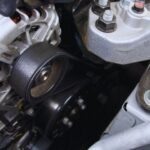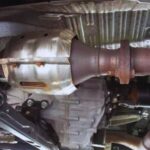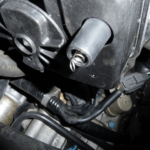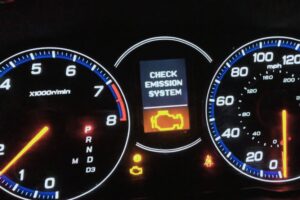If not for the CV joint, you can’t turn the steering wheel, and the wheels won’t be able to turn to the left or the right. You will experience this problem if this car component goes bad. CV Joint – what is it and the symptoms of it going bad?
Constant Velocity Joints or CV joints for short are an integral part of front-wheel-drive cars. They are installed on both ends of the car’s driveshaft. They allow the driveshaft to transmit or transfer power via a variable angle at a steady rotational speed. It does this without a noticeable play or increase in friction.
CV joints are designed so that they can bend in whatever direction you turn the steering wheel. It has to be able to do this while constantly turning the drive wheels at constant velocity.
Read on to learn more about CV joints, what they are, their functions, and the symptoms that will tell you if they are going bad.
CV Joint – What Is It

Enables the Driveshaft to Transfer Power via a Variable Angle
If you have a front-wheel-drive car, it most surely is fitted with Constant Velocity Joints or CV joints for short. They would be situated on both ends of your car’s driveshaft. This car part enables the driveshaft to transmit or transfer its power via a variable angle.
It does this at constant rotational velocity, without any noticeable increase in play or friction. CV joints are part of the shaft that is attached to the transmission of your car. One of its ends is attached to the wheel, and the other is attached to the transmission.
Your car has a constant velocity axle which is also called a half shaft. It gets power from your car’s transmission and differential and then transfers this power to the wheels. This enables your car to move forward or backward.
Critical Piece of Engineering
Considering the work it does, the CV joint is a critical piece of engineering. That is why you need to pay attention to the symptoms that indicate it is experiencing problems. Thankfully, the symptoms of a CV joint going bad have already been identified.
The basic purpose of CV joints in your car is to transfer power from the transmission to the wheels at constant rotational speed without creating much friction and unwanted play in the connected parts.
So, the CV joints ensure that power is transferred smoothly from the transmission to the wheels, regardless of where you turn the steering wheel. All front-wheel and all-wheel drive cars are fitted with CV joints.
Covered by the CV Gaiter
The CV joints on rear-wheel-drive vehicles with separate rear suspensions are attached to the ends of the half-shaft. A rubber boot called the “CV gaiter” protects the CV joint. A CV joint also has an outer and inner joint.
How a CV Joint Works
All the CV Joints Have Inner and Outer Joints
All CV joints have inner and outer joints:
- Inner Joint: Connects the driveshaft to the transmission, and
- Outer Joint: Connects the driveshaft to the wheels.
CV joints ensure that the torque from the transmission to the drive wheels can be smoothly transferred at a constant speed.
While the CV joints are fulfilling this function, they must also accommodate the up and down motions of the vehicle’s suspension. For front-wheel drive vehicles, the CV joints transmit the torque to the front wheels when the vehicle is turning.
Available in Two Types
CV joints are available as a tripod type or as a ball-type:
- Tripod-type CV joints: Commonly used on the inner side as inner CV joints for front-wheel drive vehicles, and
- Ball-type CV joints: Fitted on the outer side of the driveshafts as outer CV joints.
CV Joint’s Basic Function
The basic function of CV joints is to make sure that when you step on the gas, your car’s wheels will turn. So, if the CV joints are not functioning properly, your car’s handling will be affected.
A Popping Sound When Shifting Gears Is a Sign of Malfunctioning CV Joints
When the CV joints malfunction, you will usually hear a clunk or popping sound when you shift gears. If a CV joint breaks, it can cause your car to stop moving, leading to damage depending on your actual situation on the road.
So, you need to ensure that these CV joints are working as efficiently as they should. It is a critical component of your car’s transmission system that must always be kept in good working condition.
Again, what is a CV Joint? Constant velocity joints (CV Joints) are located at the driver shafts’ ends. These joints connect the drive shafts both to the transmission and wheels. Usually, a cracked or damaged protective boot causes the CV Joints problems.
Most Common CV Joint Problems
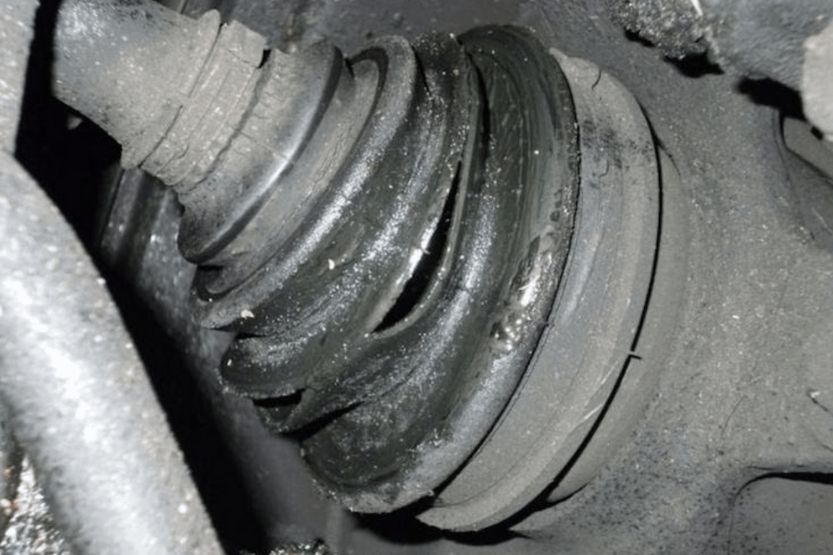
Cracked or Damaged Boot
If your car has good handling, it is fun to drive. But if it’s not good to handle, accidents may happen. Bad CV joints can badly affect the handling of your car. The most common CV joint problem is cracked or damaged boot.
Problems with CV joints are not caused by the joints themselves but by their protective coverings. A CV joint is encased in a plastic or rubber boot. Two clamps hold this boot in place. This boot seals the CV joint, which is tightly packed with special grease. In this setup, the CV joint does not need much care and maintenance. It can also last for a long time.
Causes of Cracked or Damaged Protective Boot
However, the grease will come out when this protective boot is cracked or damaged, maybe because of old age or an accident. Moisture and dirt can creep inside the boot. This can cause the fast wearing out of the CV joint.
Outer Joints Usually Get Damaged First
If the situation is not corrected, the CV joint will eventually fail because the grease is no longer lubricating it. Its inner parts will also get rusty because of the presence of moisture and dirt. Usually, it is the outer CV joints that go bad first. They are the ones exposed to stresses more than the inner joints.
When Protective Boot Is Damaged, Replace the CV Joints
If the protective boot is damaged, you need to replace the joint altogether. It is not possible to repair a bad boot. Once the protective boot is damaged, the only way to correct the CV joint problem is to replace the whole joint assembly.
But take heart, the majority of cars running the streets today are still using their original CV-joints, even after their odometer readings have reached more than 300,000 miles. The CV joints in your car may not be too different.
Symptoms of a Bad CV Joint
You need to know the symptoms that will tell you if the CV joints of your car are going bad. This will save you time and expensive repair and replacement costs. Here are the most common symptoms of a malfunctioning CV joint:
1. Loud Sounds When Turning
If you hear a loud clicking or popping noise as you turn the steering wheel, it could be a sign that the CV joint of your car is going bad. You may need to replace the whole shaft assembly or even the whole CV joint itself. It depends on what your qualified mechanic will find out.
The CV joint may be worn already, or it may be broken. You may be able to know what causes the problem if you will do the following:
- Put the gear in reverse
- Turn the wheel all the way to one side
- Step on the gas pedal
- Do you hear a strange noise while doing this?
2. Vibration While Driving
Your car will normally vibrate as you drive it. But if the vibration is excessive, you should be concerned. If you feel its vibration when you step on the gas, or if the ‘bounce’ of your car is more than usual, this may be caused by the CV axle going bad.
The moment you get this feeling of excessive vibration, get your car to your trusted mechanic and have it checked.
3. Knocking Sound
If you hear a clunking or knocking sound, especially if it is rhythmic, pay attention. This could be a CV axle issue, though it is the only possibility. Even then, you need to have it inspected by a qualified mechanic.
Do you hear that sound when you are putting the gear in reverse? If the sound is louder when you do that, it may be a CV joint problem. Perhaps this joint is already worn out because of use. The noise can come from the inner or the outer joint.
You can check if it is a joint problem by yourself. Put the gear in reverse and then step on the gas. Accelerate first and then slow down. Do this back and forth. Listen if the knocking sound goes louder. If it does, it could be a failing CV joint.
4. Grease on the Tire Edge
If there is the presence of grease in the inner edge of the tire, it could be a CV joint issue. You already know about the protective boot of the CV joint. While the CV joint is spinning, this boot prevents the grease from leaking out.
But if the boot already has cracks or is already damaged, the grease inside will leak out. The first car part indicating this problem is the inner edge of the wheel’s tire where the CV joint is attached. Don’t wait for this leaking problem to develop into a more serious car problem. Get your car immediately to your trusted mechanic for replacement.
5. Bouncy Ride
If you are driving on a well-paved road, your car will smoothly glide over the surface. However, if the CV joint of your car is going bad, even if the street you are driving on is entirely flat, with no potholes and debris on the surface, it will bounce around as if it is running off-road.
Your suspension is acting strange. Perhaps, it is because your CV joints are not doing their work.
Cost of Replacing CV Joints

The cost of replacing a CV joint is not that much. It can range from $95 to $210, depending on the severity of the issue and if you will do it yourself. Asking a qualified mechanic to do the job will jack up the price between $165 and $800.
The actual cost will depend on what should be replaced, whether it is a single axle or a double axle. The cost of replacing a double axle is approximately twice as much compared to just replacing a single axle.
Your car’s make and model will also influence the total cost of repair. The time it will take to fix the issue will also affect the repair cost. If your car is the latest model, it can cost you more.
The cost of the CV joint itself only ranges between $90 and $200. It is the labor cost that gobbles up the larger amount of the whole. That’s only natural because you are utilizing the specialized knowledge and skill of the professional mechanic.
Conclusion: CV Joint
A Constant Velocity Joint is an important component of a front-wheel-drive car. It is installed on the two ends of the car’s driveshaft. This CV joint allows the driveshaft to transmit or transfer power using a variable angle at a steady rotational speed.
There should be no noticeable play or increase in friction while it transmits its power. But if the CV joint is going bad, you will notice the differences in your car’s drivability.
Related reading:
CV Axle Replacement, Cost to Replace, Symptoms and Puller Tools

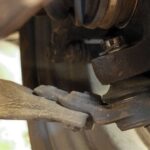
![Bad Timing Belt Symptoms [6 Main Symptoms] Bad Timing Belt Symptoms](https://roadsumo.com/wp-content/uploads/2021/09/bad-timing-belt-symptoms-150x150.jpg)
![CV Joint Noise [When Driving Straight or Turning] cv joint noise](https://roadsumo.com/wp-content/uploads/2021/06/cv-joint-noise-150x150.jpg)
